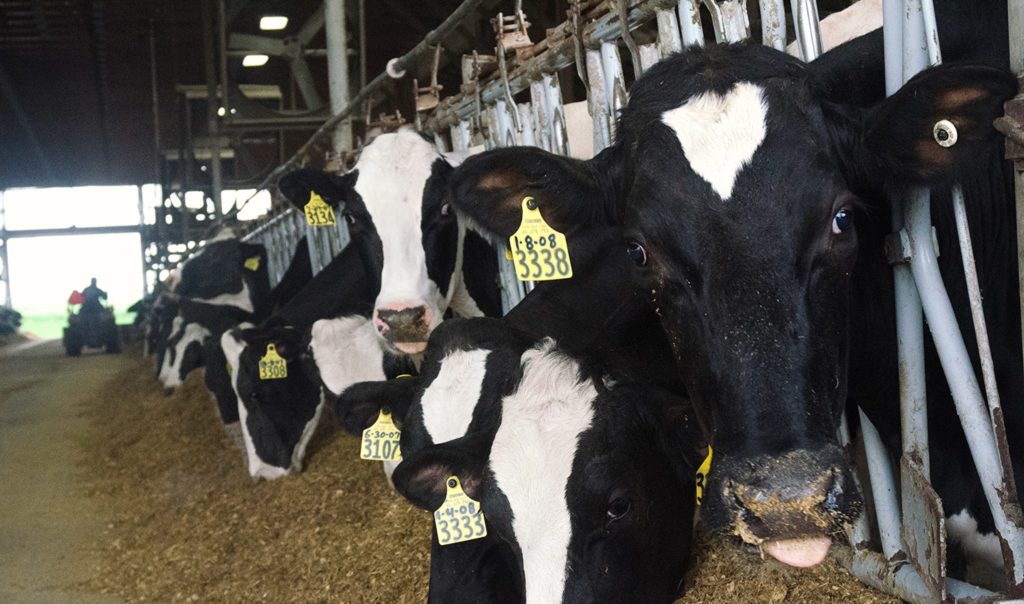Investments Across Fields: Finding Value in Sustainable Farming Practices
In our quest for a healthier climate, healthier hearts, and healthier cows, it may be time to reconsider our consumption of steak. The carbon emissions associated with every steak are equivalent to those emitted by a tank of gas. However, given that the United States remains a significant consumer of meat and dairy, farmers have discovered a way to extract additional value from an unlikely source – cow manure. This innovative approach represents a step in the right direction.
Most farmers have adopted a practice of recycling the nutrients found in cow manure by reintroducing it to their fields. This process creates a closed loop where the manure fertilizes the crops that sustain the cows, resulting in increased milk production for human consumption. From an ecological standpoint, it is a commendable system. However, manure has its downsides – it emits odors and releases methane, a potent greenhouse gas that is approximately 30 times more potent than carbon dioxide.
Enter companies like Farm Power, which have introduced methane digesters into existing nutrient loops on dairy farms. These digesters process raw manure, capturing the methane and transforming it into biogas. Instead of releasing methane into the atmosphere, it is repurposed to generate electricity, which is then sold to utility companies. Methane digesters serve as carbon offsets, significantly reducing greenhouse gas emissions. As a result, they attract investment from companies aiming to balance their carbon footprint through sustainable development projects. Another inventive approach to reducing methane emissions involves cows consuming kelp, but more on that later.
Furthermore, practices such as carbon farming and field rotation can play a crucial role in carbon sequestration. For every percentage of CO2 stored in the soil, its capacity to retain water increases by 10%. Carbon farming presents a technological solution that not only helps keep farms viable but also safeguards the atmosphere.
Take, for example, Brubaker Farms in Mount Joy, PA. This family-owned dairy farm operates as both a dairy producer and a green energy producer. With approximately 850 cows, it produced a staggering 20,200,000 pounds of milk last year. The farm implemented a methane digester, made possible through a grant from the U.S. Department of Agriculture’s Rural Energy for America Program. This digester processes more than 41,859 metric tons of organic waste, capturing methane gas that fuels a low emission generator, producing 225 kW of electricity. This energy powers the digester itself and farm operations, with any excess power sold to the local grid, benefiting the community with a sustainable energy source.
The digester’s effluent is separated into liquid and solid materials. The liquids are used as fertilizer, while the solids become high-quality bedding for the cows, surpassing the cleanliness of traditional sawdust. This bedding not only provides comfort for the cows but also saves the farm approximately $30,000 annually. Moreover, the system removes 90% of the odor from cow manure, benefitting the residents of Mount Joy. To further enhance its sustainability efforts, the farm can accept 2,600 gallons of food waste per day from local sources that would otherwise end up in landfills. Additionally, the farm sells its nutrient credits to the local municipality, helping it meet federal requirements while preventing sewer bills from rising. These environmentally friendly community partnerships create additional revenue streams for the farm.
In the quest for a more sustainable future, it is clear that farmers are making investments across various fields. They are finding value not only in the production of food but also in mitigating their environmental impact. As we continue to explore innovative practices, such as methane digesters, carbon farming, and collaborative partnerships, we inch closer to a healthier climate and a more resilient agricultural industry.
Photo by Lance Cheung, courtesy of the USDA.
